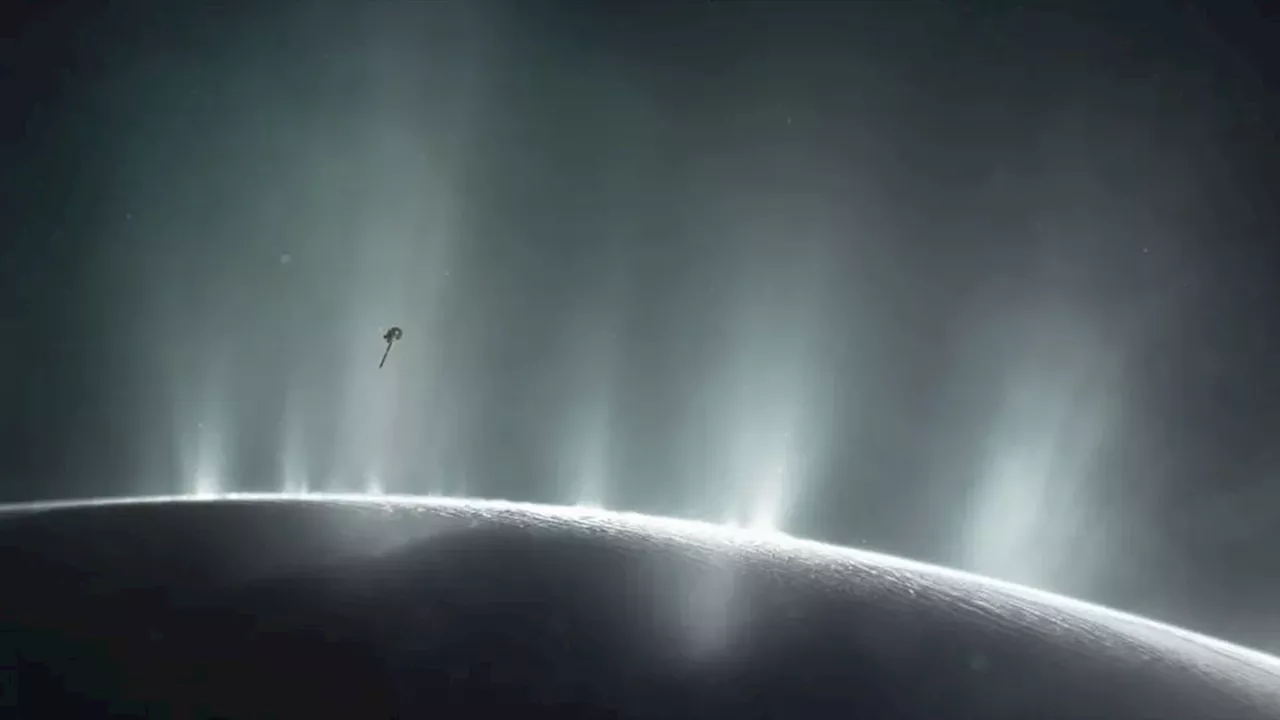Sharmila Kuthunur is a Seattle-based science journalist covering astronomy, astrophysics and space exploration. Follow her on X @skuthunur
Spacecraft flying through ice plumes in space could help scientists spot alien life — even if it's only tiny bits of a cell in a few grains of ice, lab experiments have revealed for the first time.
By sampling and analyzing plumes of Enceladus and perhaps Europa, scientists can learn whether life-friendly molecules exist in their subsurface oceans. But of the hundreds of thousands of ice grains blasted into space by these icy moons, bacterial cells may be concentrated only in a tiny number of them.
By submitting your information you agree to the Terms & Conditions and Privacy Policy and are aged 16 or over.In the experiment, described in a study published Friday in the journal Science Advances, the researchers used a very thin tube to inject this water into a small vacuum chamber. The water droplets were 15 micrometers in diameter,"which is a bit bigger than the ice grains in space but it is still extremely tiny," Klenner told Live Science.
"Our results give us more confidence that using upcoming instruments, we will be able to detect lifeforms similar to those on Earth, which we increasingly believe could be present on ocean-bearing moons," Klenner said in the statement.
Canada Latest News, Canada Headlines
Similar News:You can also read news stories similar to this one that we have collected from other news sources.
![]() SpaceX rocket launches pioneering methane-tracking satellite to orbitSharmila Kuthunur is a Seattle-based science journalist covering astronomy, astrophysics and space exploration. Follow her on X skuthunur.
SpaceX rocket launches pioneering methane-tracking satellite to orbitSharmila Kuthunur is a Seattle-based science journalist covering astronomy, astrophysics and space exploration. Follow her on X skuthunur.
Read more »
 Asteroid Apophis will swing past Earth in 2029 — could a space rock collision make it hit us?Sharmila Kuthunur is a Seattle-based science journalist covering astronomy, astrophysics and space exploration. Follow her on X skuthunur.
Asteroid Apophis will swing past Earth in 2029 — could a space rock collision make it hit us?Sharmila Kuthunur is a Seattle-based science journalist covering astronomy, astrophysics and space exploration. Follow her on X skuthunur.
Read more »
 James Webb telescope detects oldest 'dead' galaxy in the known universe — and its death could challenge cosmologySharmila Kuthunur is a Seattle-based science journalist covering astronomy, astrophysics and space exploration. Follow her on X skuthunur
James Webb telescope detects oldest 'dead' galaxy in the known universe — and its death could challenge cosmologySharmila Kuthunur is a Seattle-based science journalist covering astronomy, astrophysics and space exploration. Follow her on X skuthunur
Read more »
 Mystery of Jupiter's Great Blue Spot deepens with strangely fluctuating jetSharmila Kuthunur is a Seattle-based science journalist covering astronomy, astrophysics and space exploration. Follow her on X skuthunur.
Mystery of Jupiter's Great Blue Spot deepens with strangely fluctuating jetSharmila Kuthunur is a Seattle-based science journalist covering astronomy, astrophysics and space exploration. Follow her on X skuthunur.
Read more »
 If there's life on Europa, solar sails could help us find itSharmila Kuthunur is a Seattle-based science journalist covering astronomy, astrophysics and space exploration. Follow her on X skuthunur.
If there's life on Europa, solar sails could help us find itSharmila Kuthunur is a Seattle-based science journalist covering astronomy, astrophysics and space exploration. Follow her on X skuthunur.
Read more »
 'Potentially hazardous' asteroid Bennu contains the building blocks of life and minerals unseen on Earth, scientists reveal in 1st comprehensive analysisSharmila Kuthunur is a Seattle-based science journalist covering astronomy, astrophysics and space exploration. Follow her on X skuthunur
'Potentially hazardous' asteroid Bennu contains the building blocks of life and minerals unseen on Earth, scientists reveal in 1st comprehensive analysisSharmila Kuthunur is a Seattle-based science journalist covering astronomy, astrophysics and space exploration. Follow her on X skuthunur
Read more »
